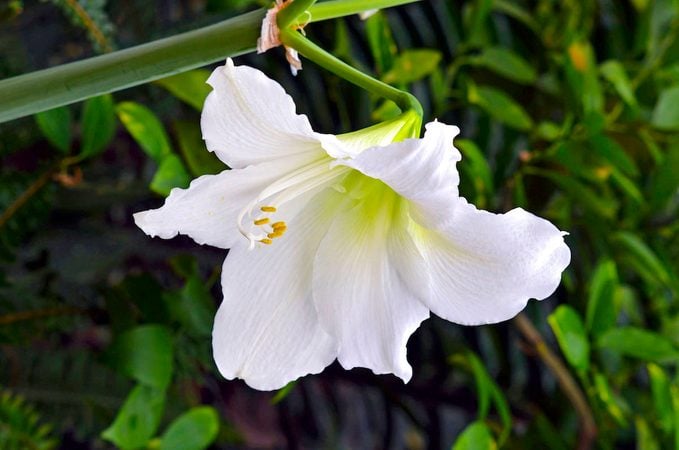How to Grow and Care for Amaryllis (and Make the Bulbs Rebloom!)
Updated: Nov. 15, 2022
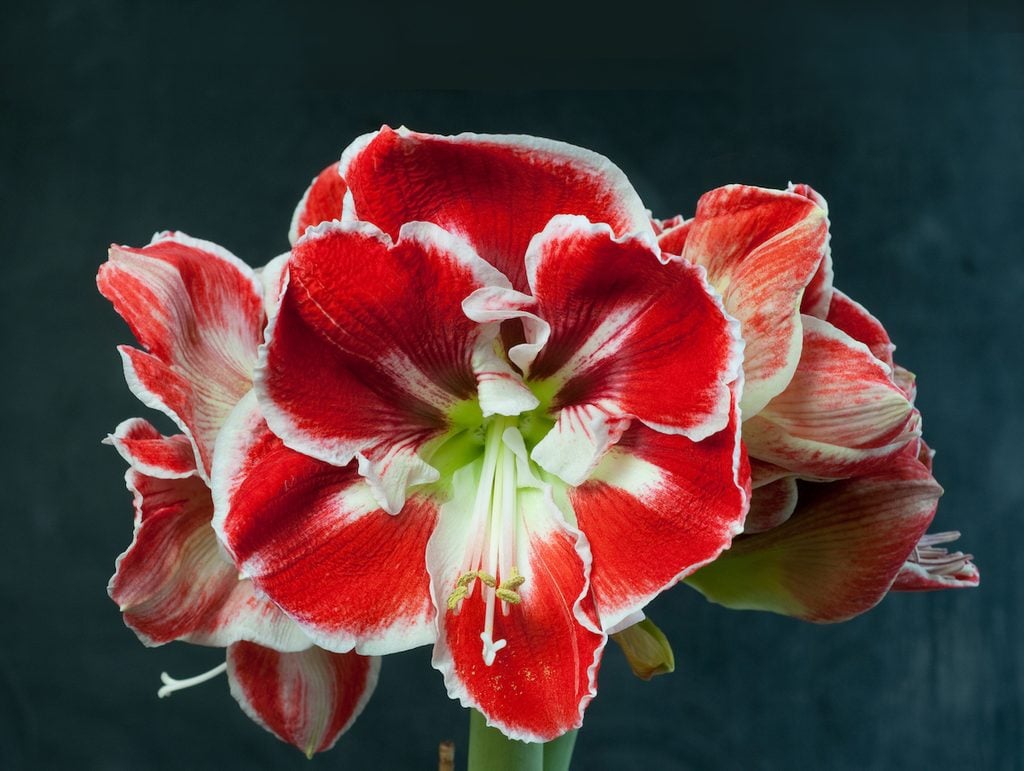
If your green thumb is itching to dig in the dirt this winter, grow amaryllis! Learn how to care for amaryllis and get the bulbs to rebloom.
Our editors and experts handpick every product we feature. We may earn a commission from your purchases.
One of the easiest and most impressive flowers around, amaryllis bulbs blossom in almost every color of the rainbow, from velvety red to pale green. The huge trumpet-shaped flowers may reach 8 inches across. Bearing multiple buds on a single stalk, amaryllis (Hippeastrum) are popular holiday gifts. Horticulturalists have created dozens of amaryllis specimens, and they’re all easy to care for. Two- to 3-foot stems support flowers that may be striped, bicolored or solid. Here’s what you need to know about how to grow and care for amaryllis bulbs.
Did you know—you can also grow amaryllis seeds.
How to Care for Amaryllis Bulbs
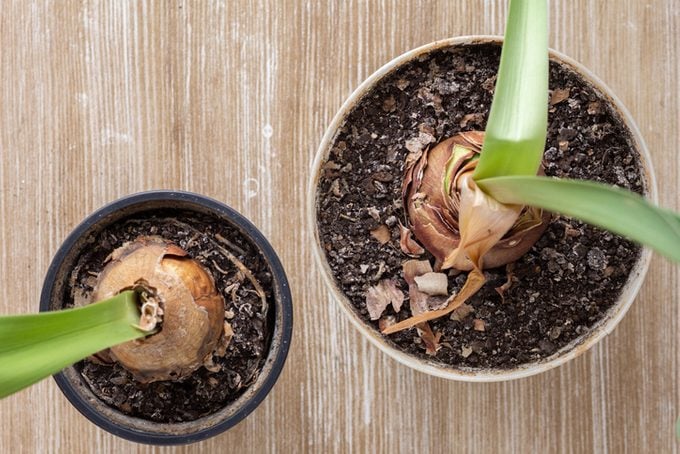
- Plant one bulb in a single pot or several in a larger container.
- For one amaryllis, choose a vessel at least 7 to 8 inches deep and 1 inch larger than the bulb in diameter.
- Make sure the pot you choose has proper drainage holes to keep the roots from becoming waterlogged.
- Put a few inches of potting mix in the pot, settle the bulb on top, then fill in the sides with additional mix.
- When you’re done, the top one-third of the bulb should be popping out from the dirt.
- Place the container in a cool, sunny spot and keep the potting mix barely moist.
- Amaryllis does best in rooms that are around 65 degrees.
- Bulbs are simple to start indoors, but take seven to 10 weeks to bloom.
We found even more winter garden ideas to keep growing while it’s snowing.
Amaryllis Care After Blooming
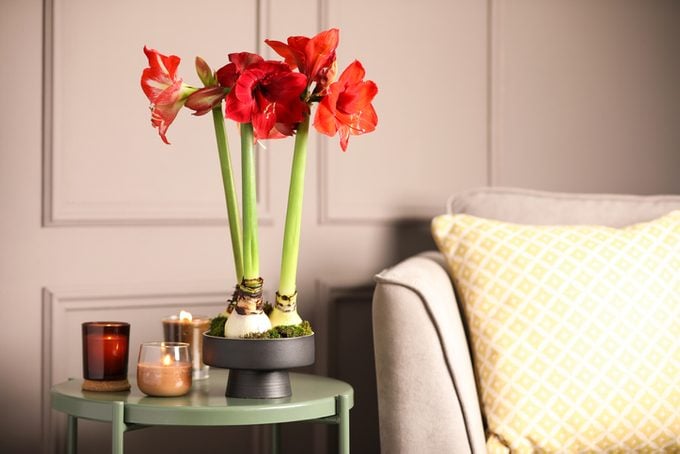
Depending on the variety, it takes about a month for the bulb to sprout. Once the stem sprouts, turn the pot occasionally to even out sun exposure to ensure straight growth. Later, once the flowers burst open, move the container away from direct sunlight and keep it cool. When the first round of blooms fades, cut them off and, once the stem is bare, cut it back to just above the bulb. Some amaryllis types may produce a second, or even third, batch of brilliant blooms.
Learn how to care for poinsettias now and after the holidays.
How to Get Amaryllis Bulbs to Rebloom
Don’t throw away your amaryllis plants after one season. With care and attention, you can keep your amaryllis bulbs blooming year after year. To coax your amaryllis plants into re-blooming around the holidays, move them to a cool place (around 55 degrees) in fall to begin their dormant period.
Giving the bulbs an eight- to 12-week rest period allows you to control the bloom time. Plants will emerge from dormancy—and usually bloom in four to six weeks— after you pot and begin watering them.
Learn how to care for a Christmas cactus and help it bloom.
Amaryllis Care: Watering and Fertilizing
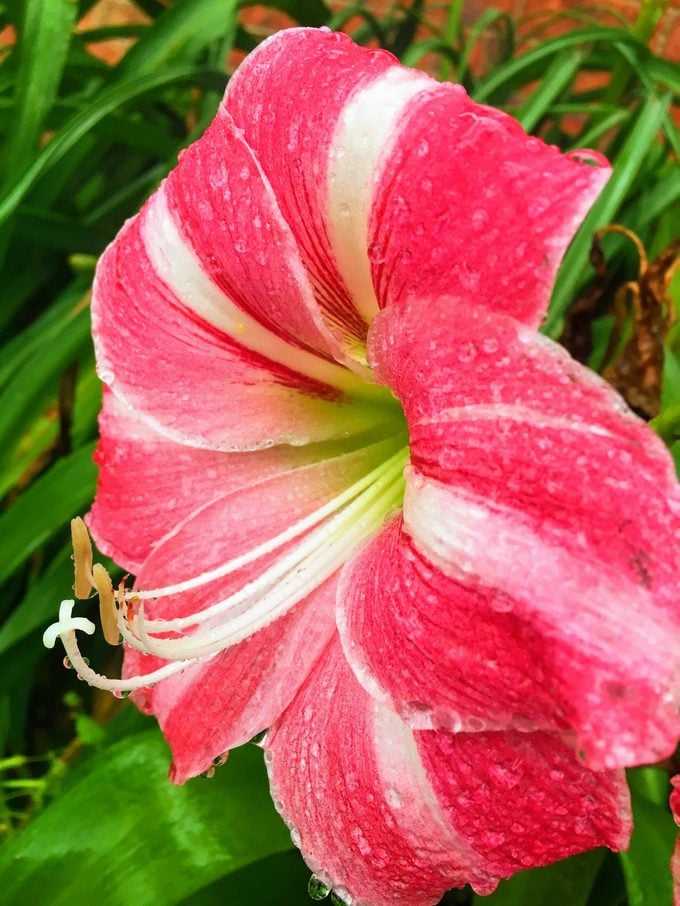
“I would like to grow amaryllis year-round without the fall resting time. What are the light, water, and fertilizer requirements?” asks Caryl Baetjer of Unionville, Pennsylvania
Garden expert Melinda Myers: If you ask several gardeners this question you will likely receive several different recommendations for reblooming amaryllis. Most do involve a rest period. Here’s what I suggest. Remove the flower stalk once the flowers fade and add a flowering plant fertilizer.
Move the plants outdoors in summer for best results (a sunny window works, too). During the warmer months, amaryllis plants generate the energy needed for new growth and flowers.
In the winter, move it to a slightly cooler, brightly lit location. At this point, your plant likely has just a few leaves, so water sparingly. If you are lucky, new flower stalks appear in January or February. The key is finding a method that works best for you, your growing conditions and the plant.
Follow these tips for overwintering begonias indoors.
Amaryllis Care: Planting Bulbs Outside
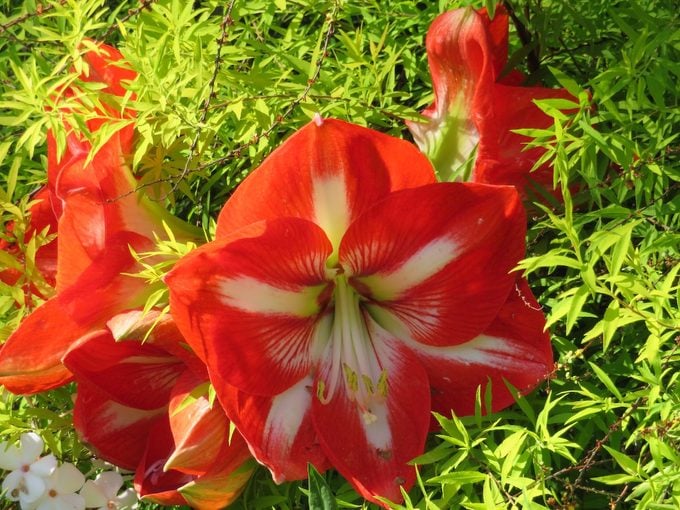
While Northern gardeners are used to forcing this plant to bloom in pots indoors, those gardening in Zones 9 and 10 can add them to the perennial garden and leave them in the ground year-round. Gardeners in Zone 8 may have success if they mulch the soil with 6 inches of straw in late fall or early winter after the leaves die back. Grow in full sun to part shade and well-drained soil for best results.
“I keep my amaryllis plants outdoors in the spring and summer, and one year they bloomed! Is that normal, and should I expect that in the future?” asks Peggy Haskin of Racine, Wisconsin.
Melinda Myers: Summer blooms are not the norm but often occur when the plants are actively grown year-round. Winter and summer blooms appear on the same plant when you keep them growing and skip the dormant treatment. Enjoy the summer bloom and consider actively growing a few amaryllis plants year-round for multiple seasons of bloom.
Check out the top 10 easy-care holiday houseplants.
Why Will My Amaryllis Not Bloom?
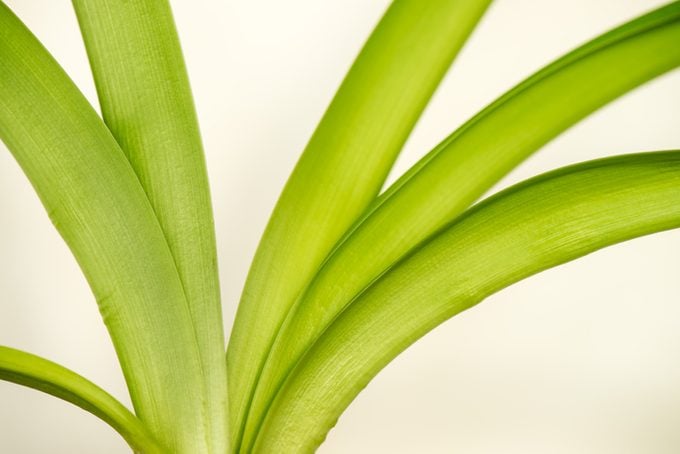
“My amaryllis has five green leaves, and it’s about 14 inches tall, but no bloom. What could be wrong with it? asks Joyce LeMaster of Pharr, Texas.”
Melinda Myers: You’re lucky to be able to grow amaryllis indoors or out in your area. Start by evaluating the growing conditions. Make sure your plant is in a mostly sunny spot with a bit of afternoon shade and moist, well-drained soil. Avoid excess nitrogen fertilizer, which can prevent flowering.
Grow indoor amaryllis plants in a sunny window and water as needed. Consider moving them outdoors spring through summer. In late summer cut back on watering and move the plant to a cool location indoors to induce dormancy. In eight to 10 weeks you should notice new growth. Bring your sprouting amaryllis into a warm, sunny window to encourage growth and flowering.
Are poinsettias poisonous to cats and dogs?
Amaryllis Care: Red Blotch Treatment
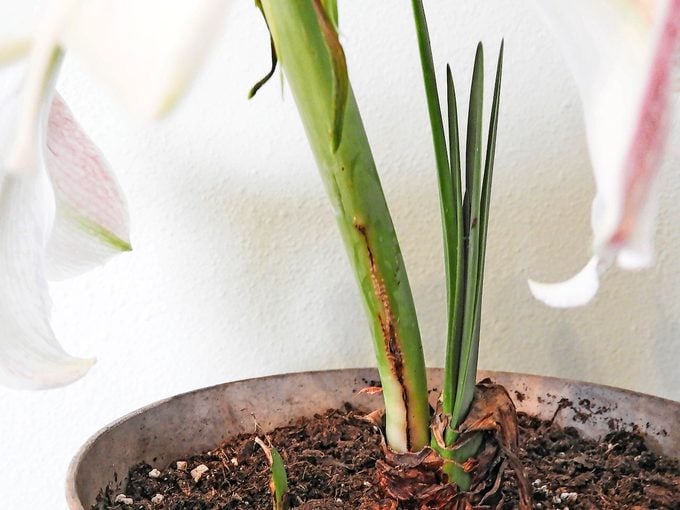
“The amaryllis bulbs I store and regrow have red blotches on the leaves and stems. What’s wrong with them?” asks Sue Gronholz of Beaver Dam, Wisconsin.
Melinda Myers: The symptoms match both the name and the description of red blotch, a fungal disease. It may develop at the base of flower stalks and emerging leaves. Infected leaves may become distorted or the stalks could break easily. The disease isn’t fatal, but it can ruin the plant’s appearance. Reduce the risk of disease by buying healthy bulbs, using clean containers and planting in sterile potting mix. Prevent the spread by cleaning tools and stakes used on infected plants with rubbing alcohol. If the disease persists, use a fungicide or replace the bulbs.
Learn 7 surprising facts about holiday flowers and plants.
Where to Buy Amaryllis Bulbs

Amaryllis bulbs are thoughtful gifts for gardeners, new plant parents and everyone in between. Shopping online for amaryllis bulbs allows you to choose from many colors and unique varieties. You may also find them at local garden centers and big box stores.
Check out more of the best websites for buying flower bulbs online.

